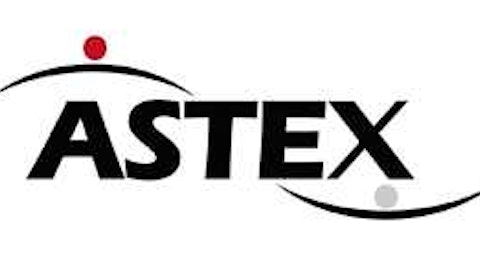Rigel Pharmaceuticals, Inc. (NASDAQ:RIGL) just put out data from its lead pivotal, and the company is up close to 50% on the numbers. Needless to say, the data came out on the right side of expectations, and the company look as though it is set for a reversal in fortunes after what has been a pretty tough twelve months for it, and its shareholders.

wavebreakmedia/Shutterstock.com
Here’s what the data told us about the drug in question, and what it means for Rigel Pharmaceuticals, Inc. (NASDAQ:RIGL) going forward.
So, the drug. It’s called fostamatinib, and it’s targeting an indication called immune thrombocytopenia (ITP). We actually covered this as a forward looking piece a couple of weeks ago, highlighting what we were looking for from the data as indicative of a succesfull campaign for the company. For those looking for an in depth discussion, check out the article here.
By way of a brief introduction to the company and its candidate, however, fostamatinib is what’s called a prodrug of an already approved compound, tamatinib. Tamatinib is a Syk inhibitor, which inhibits an enzyme called spleen tyrosine kinase. Spleen tyrosine kinase is the enzyme responsible for breaking down platelets in the blood. In healthy patients, it’s no issue. In patients with ITP, however, it’s overactive, and too many platelets get broken down. This leads to an inability to clot, and in turn, some pretty severe consequences. If a patient is cut, he or she can bleed to death. If they bruise, the bruising can be extensive and painful. The list goes on, but these are the primaries.
By inhibiting spleen tyrosine kinase, tamatinib stops the degradation of the platelets, and in turn, should promote clotting in these patients.
When we highlighted the company a couple of weeks ago, we noted a very important point about the then-upcoming data – that ITP is heterogeneous (some patients respond to some treatments, some respond to others, nobody really knows why and there’s no real way of knowing before administration). As such, it didn’t really matter what percentage of the patients responded to treatment, just that some of them did.
And they did.
Across a sample size of 76 patients, 18% achieved the primary endpoint of achieving greater than 50,000 platelets per uL of blood on at least four of the last six scheduled visits between weeks 14 and 24 of treatment. That’s pretty much one in five. For a treatment in a heterogeneous indication like this, that’s great data.
Safety hasn’t been an issue to data, and the data in the recent study reaffirmed this profile.
So what’s the impact on the company going forward? There are around 60,000 individuals with ITP in the US right now, and let’s assume that the proportion of these that will respond to the treatment is similar to that seen in the trials – circa 20%. This gives a target market of around 12,000 individuals. The treatment is chronic administration, meaning it will likely be necessary for a patient to dose rest-of-life, twice daily of either the 100mg or the 150mg dose.
This translates to a peak sales projection in this indication of up to $400 million given current industry standard pricing.
What about timeframes?
The company expects to submit to the FDA by the end of the second quarter next year, and so we will likely be looking at a first quarter 2018 PDUFA.
Follow Rigel Pharmaceuticals Inc (NASDAQ:RIGL)
Follow Rigel Pharmaceuticals Inc (NASDAQ:RIGL)
Note: This article is written by Mark Collins and originally published at Market Exclusive.





